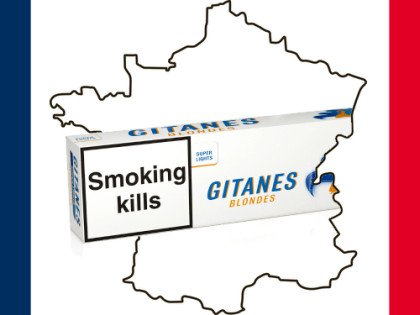The Coalition of Codswallop, as they ought to be known as, has produced a document titled “The Flavour Trap: How Tobacco Companies Are Luring Kids with Candy-Flavoured E-Cigarettes and Cigars”.
“As fewer kids smoke traditional cigarettes, tobacco companies are enticing them with a booming market of sweet-flavoured tobacco products, especially electronic cigarettes and cigars,” writes the mendacious mob.
According to the accompanying press release: “Sweet flavours make the products ‘seem like they belong in a candy store or ice cream parlour,’ the report states. Flavour examples cited include gummy bear, cotton candy, peanut butter cup, cookies ‘n cream and pop rocks for e-cigarettes and chocolate, wild berry, watermelon, lemonade and cherry dynamite for cigars. One study found over 20 different types of unicorn-themed e-cigarette flavours, such as Unicorn Puke, often paired with cartoon imagery.”
It follows the groups concerns over efforts to change the FDA’s grandfather date, which would prevent the crushing of the independent vape industry. At the time, Matthew L. Myers, president of the Campaign for Tobacco Free Kids, said:
“By working on what purports to be a technical change, it leaves on the market the candy and fruit-flavored e-cigarettes that are so popular among young people. You can put any gloss on it you want, this is the tobacco industry’s effort to continue to market flavored tobacco products to hook another generation of kids.”
Clive Bates, a leading harm reduction advocate, passed comment: “I just wonder whether the anti-vaping activists have paused to even think about flavours and teens at all. Or even if they care.”
Bates has penned an extensive article dealing with the subject of flavours and claims it lures children into addiction. In it, he poses the following questions:
- What is the issue: flavour or descriptor?
- What are real youth preferences?
- Is the strength of flavour attraction sufficient to change behaviour?
- What is the pathway by which a flavour can ultimately cause harm?
- Has the possible protective effect of e-cigarette flavours on youth been considered?
- What about the possible harm to adults?
- How should the balance of risks and benefits be weighed?
- Is mention of the tobacco industry just an emotive trick?
- Do flavour bans come with harmful consequences?
He concludes: “The point is that if vaping products do substitute for smoking, then things that attract people to them are good for health. The massive emotional muddle that surrounds this issue needs more clarity and more focus on the pathways by which harm would arise or, more likely, be reduced.”
Dave Cross
Journalist at POTVDave is a freelance writer; with articles on music, motorbikes, football, pop-science, vaping and tobacco harm reduction in Sounds, Melody Maker, UBG, AWoL, Bike, When Saturday Comes, Vape News Magazine, and syndicated across the Johnston Press group. He was published in an anthology of “Greatest Football Writing”, but still believes this was a mistake. Dave contributes sketches to comedy shows and used to co-host a radio sketch show. He’s worked with numerous start-ups to develop content for their websites.
Join the discussion
CAPHRA Highlights Tobacco Control Flaws
The Coalition of Asia Pacific Tobacco Harm Reduction Advocates highlights the flaws in tobacco control which has led to the rise of black market in Australia
Come To GFN24!
Everyone is going to be welcome at #GFN24 as organisers say it will be an “antidote” to clandestine WHO COP10 and its meetings behind closed doors
CAPHRA Repeats Call For Transparency
Consumer body CAPHRA has repeated calls for greater transparency and engagement from World Health Organisation Framework Convention on Tobacco Control officials
French Plans Will Push People To Smoke
The French government’s nicotine and tobacco policy risks pushing people towards cigarettes says a consumer advocacy organisation






-listing400.jpg)




